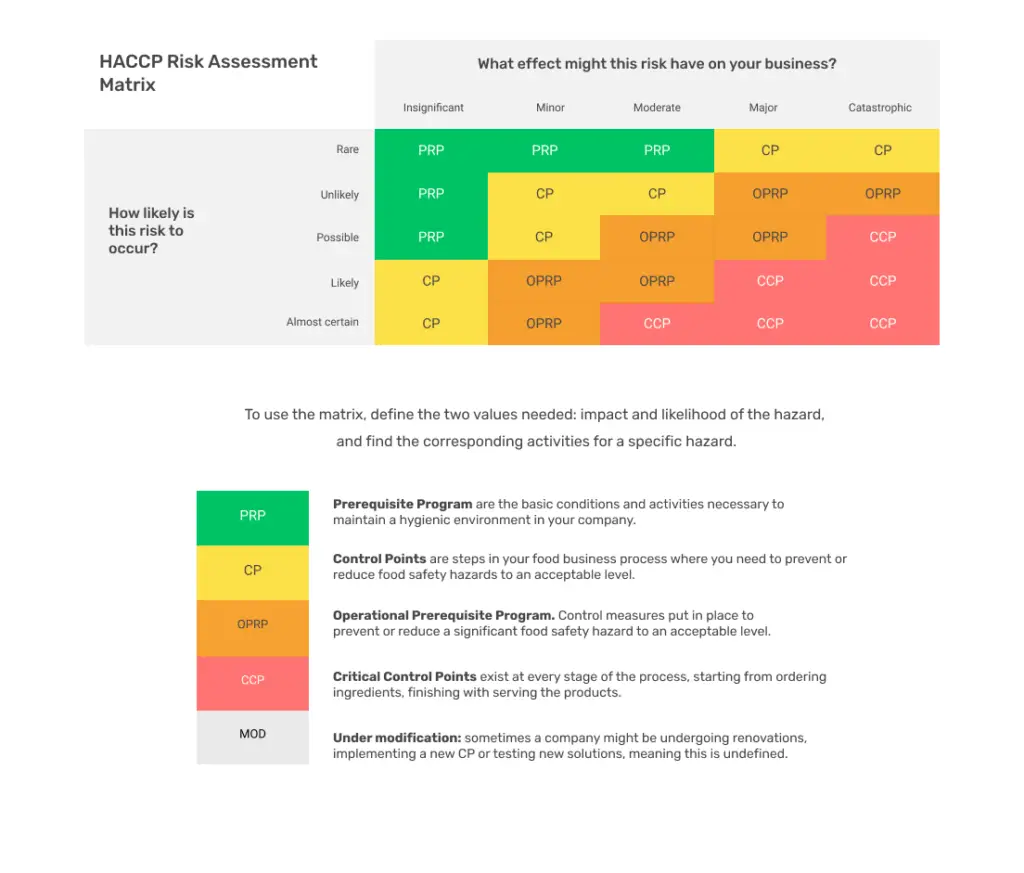A hazard assessment is an important step (Principle 1 of your HACCP plan development) in developing a food safety plan. It involves identifying and evaluating potential hazards that may be present at different stages of the food production process, from raw material production to final product distribution. The goal of the hazard assessment is to identify and prioritize the hazards that are most likely to occur and that have the greatest potential to cause harm, so that appropriate preventive controls can be implemented to reduce the risk of these hazards.
There are several steps involved in conducting a hazard assessment:
- Identify the hazards: This involves identifying all the potential hazards that could occur at each stage of the food production process. Hazards can include biological, chemical, physical, and radiological contaminants.
- Evaluate the likelihood and severity of the hazards: This involves determining the likelihood that a hazard will occur, as well as the potential severity of the impact if it does occur.
- Determine the appropriate preventive controls: Based on the results of the hazard assessment, preventive controls can be implemented to reduce the risk of the identified hazards. These controls can include process controls, allergen controls, and sanitation controls, among others.




